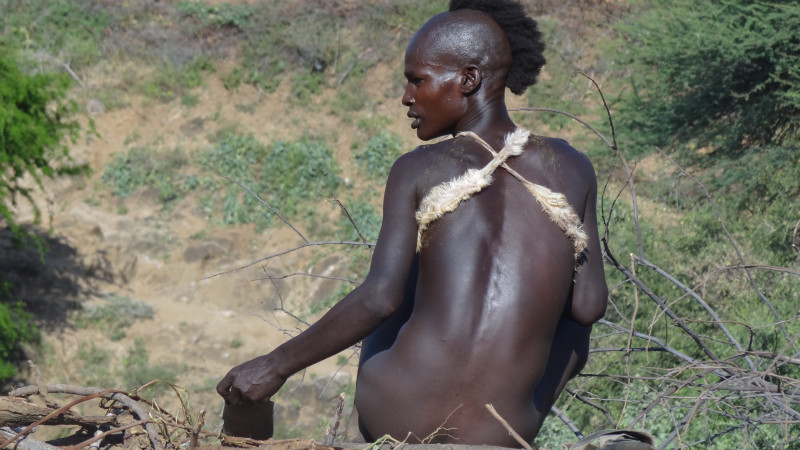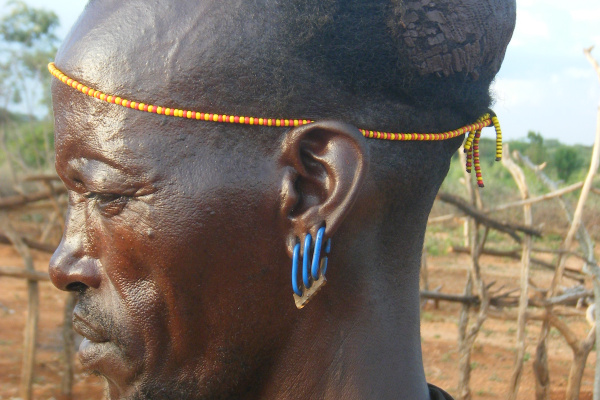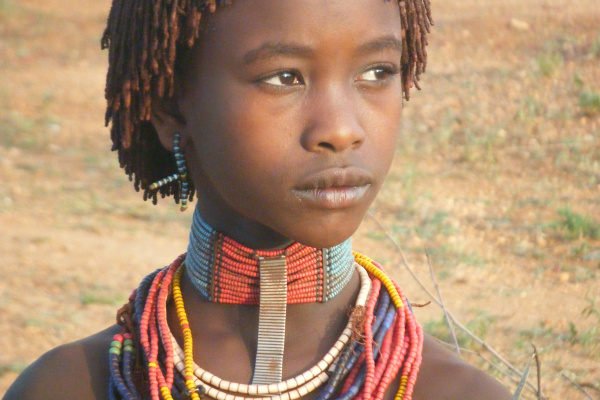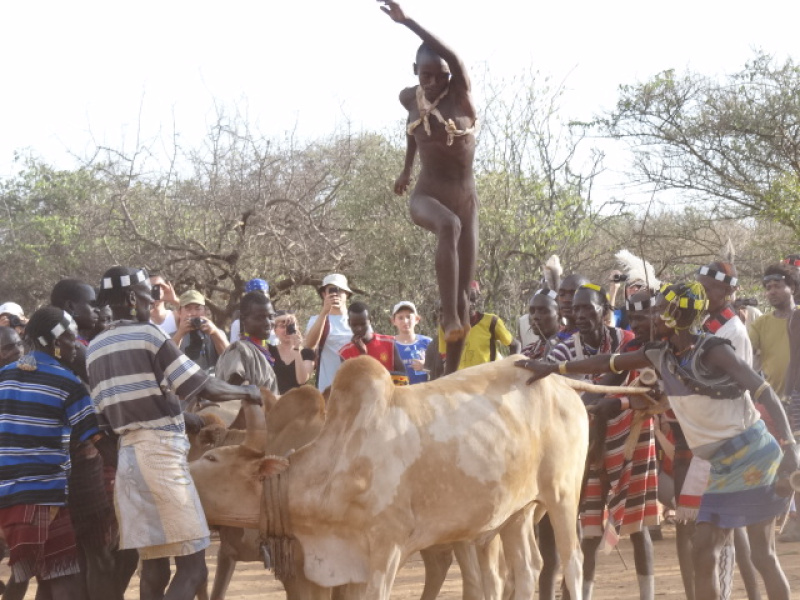The Hamer people
Presentation
The Hamer are semi-nomadic pastoralists; they live in one of the driest regions of the southern savannah of southwest Ethiopia, between the fertile lands of the east and the banks of the Omo.
The Hamer travel in groups, with their herds of cattle, following a precise route established by their ancestors on the first morning of the world. Among them, young armed men provide security for the group. Taking advantage of the long stages that punctuate their movement, they cultivate sorghum; once water resources are exhausted, they abandon the fields and set out in search of a new fertile area. They live in pointed huts made of cleverly tangled branches which resist strong sand winds.
Livestock is the socio-economic and cultural backbone of the Hamer; A man's fortune and social rank are measured by the abundance of his livestock. The animals are pampered: to enhance the elegance of the animal and to protect it from bad luck, superstitious shepherds draw decorative patterns on the coat with a razor. The favorite cattle even have the outer pinna of the ears chiselled like a garland. At birth, children receive, in addition to their baptismal name, a bovine name.

Natural beauty of the Hamer
The Hamer, both women and men, have a very keen sense of aesthetics and spend many hours daily beautifying themselves. Women anoint their bodies with oil and clay. Naked to the waist, they cover their hips with cowhide encrusted with colorful beads. They coat their hair with butter and clay and adorn themselves with numerous pewter bracelets, voluminous necklaces set with shells and other tin ornaments. On their skillfully braided hairstyles, some attach pewter visors or pearl headbands.
Apart from pearl necklaces and earrings, men favor hairstyles: the most valiant, those who have defeated the enemy or slain a ferocious animal, coat their hair with clay which, once dried, forms a rigid cap above which is planted, on a small wooden support, an ostrich feather. The others braid their hair in a mosaic pattern.
The Hamer bull jump
They proudly display their bare torsos decorated with scarifications inflicted during age group passage rituals. The most important ritual for young Hamer men is the one which marks the transition from childhood to adulthood: bull jumping.
After a series of ceremonials which extend over several days, during which a number of goats are eaten, the novices face a row of more than 30 bulls held close flank to flank by young men who have recently passed the ordeal. , but who are still too young to get married. Under the gaze of their elders, the candidates must, each in turn, take their momentum, jump on the back of the first bull and cover the row of thirty backs without tripping, then repeat the feat in the opposite direction.
To successfully complete the initiatory rite, they must complete four consecutive courses without falling. Once the test is successful, the boys are carried in triumph by their elders and acclaimed by the village. If they stumble once, we don't hold it against them, they start the test again. On the other hand, if they fail again, they suffer the ultimate humiliation: they are publicly flogged and beaten by the women of their family. Considered the outcasts of the village, they are the prey to the mockery and taunts of the entire community for the rest of their existence.




